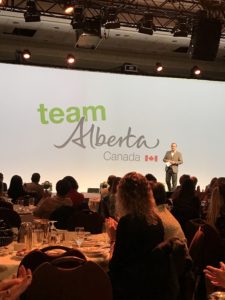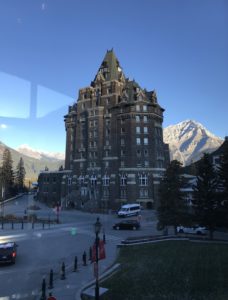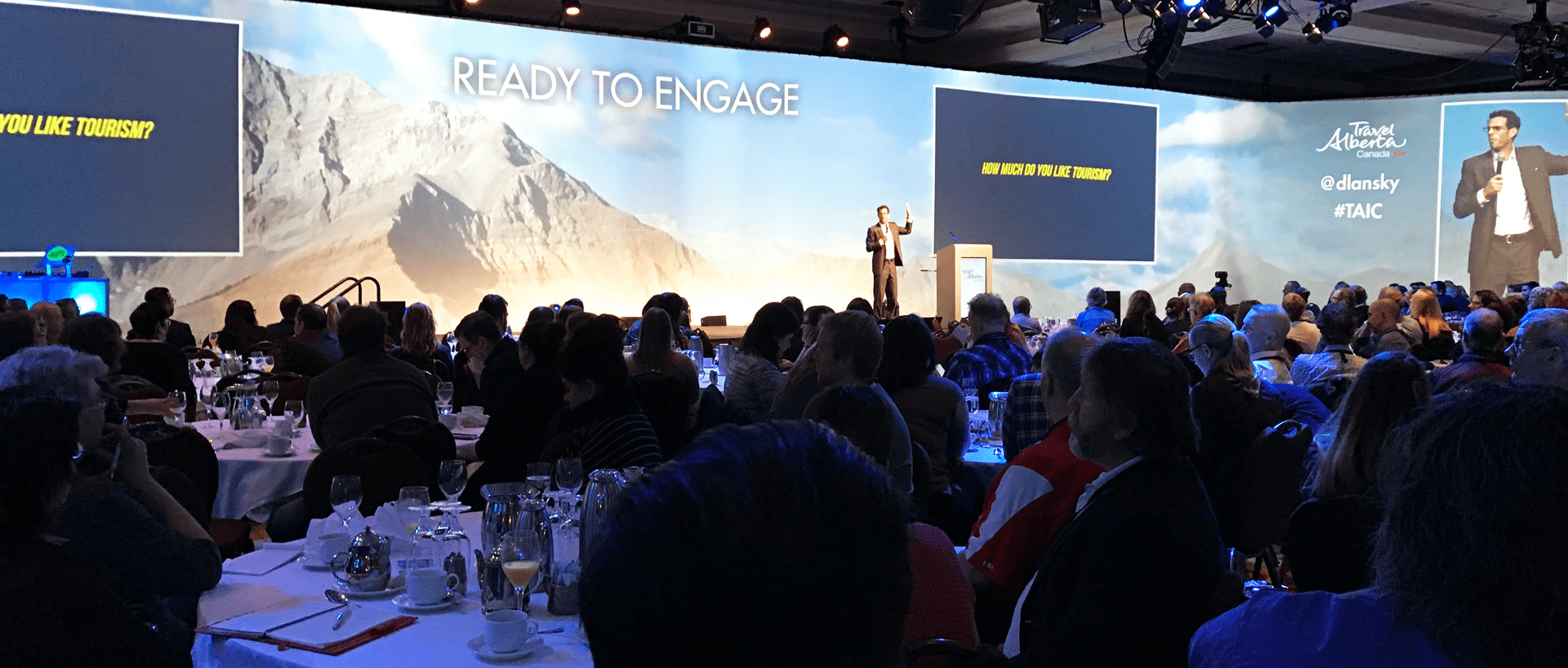Recently, I was able to attend the final day of this year’s Travel Alberta Industry Conference, I was really pleased by the quality and message of the speakers involved. Discussions have really evolved past the “jump on the bandwagon” mentality of social media and online marketing and are becoming more discerning. In other words, the bright minds in the industry are encouraging destinations to really consider what they want before they dive into executing the latest tech trends.
Doug Lansky gets Strategic about Tourism Marketing
Doug Lansky was a great example of this. In his presentation, he discussed not only how to get more visitors, but how to get more visitors to spend more cash. He suggested clever ideas such as getting people to book/pay ahead (so they’d then spend more on impulse purchases while there), and even ensuring ample access to premium toilets throughout any town or destination. He talked about marketing “what you have now” as a first stage of development, and then moving onto marketing new attractions/ideas as a next stage. For example, if you have a hot air balloon service and aurora borealis, maybe you combine the two to offer views of aurora borealis from the breathtaking heights of a hot air balloon.
But more than this, Doug talked strategy. For example – he made an excellent point about the futility of finding the perfect slogan (and showed a list of random slogans, which could literally apply to anywhere – e.g. “your paradise”, “you belong here”), unless it is firmly anchored on a communication direction. For example, if in Texas everything is supposed to be bigger, then why couldn’t retailers and experience givers show off everything from pancakes to 20-gallon hats, not to mention interesting art backdrops that make the selfie shooters look tiny in comparison?
Finally, he asked the question, “How many tourists do you really want?” explaining that too many can be very hazardous to destination stability; that is, if your destination no longer appeals to locals, it won’t be long before it fails to appeal to tourists, losing its soul along the way. He suggests that it might be time to look beyond traditional “tourist trap” approaches such as big glamourous hotels and souvenirs to more stay-with-local solutions and private tours. Today’s tourists crave authentic experiences.
Exploiting Trip Advisor
The importance of Trip Advisor’s influence on the tourism sector cannot be understated, and we were treated to a presentation by Andrew Weins, International DMO Manager for Trip Advisor. His presentation highlighted many ways that destinations could better exploit the power of this influential platform, such as:
- At the very least, claiming your listing, and updating the information within it through current data and photos.
- Promoting your Trip Advisor listing for reviews by printing business-card sized thank-you cards, door decals, or printing it on receipts/invoices.
- Use the Q & A feature to provide detailed answers to questions posed by potential buyers.
Andrew spoke a lot about setting and delivering on realistic expectations. For example, if “We’re a clean, mid-priced property” is more truthful than “We’re a 4-star hotel with a 2-star price,” then go with what’s realistic. Avoiding disappointment means avoiding bad reviews.
Regardless, since bad reviews are inevitable, we were pleased he provided some best practices in responding to them. Here is a brief overview of Trip Advisor’s recommended anatomy of a good response to a negative review:
- Thank them for their feedback.
- Reiterate anything positive they may have said in their review and thank them for it.
- Say “We regret to hear that….(negative experience they had)”
- Welcome them to contact you directly at (give a specific email and phone).
- Say “We look forward to the opportunity to welcome you back at (attraction name).”
- Ensure you sign the response with your specific name and title.
Sounds fairly basic – but there’s a trick – ensure you have a smile on your face when you write it – and this will come through in the words! And of course, try to respond within 24 – 36 hours at the latest. Great advice, Trip Advisor!
Closing Keynote
The final keynote of the conference was fun and inspiring. Jamie Clarke, a third generation Albertan and adventurist, shared his experienced planning, failing, and eventually conquering Mount Everest. If ever one has had the challenge of raising funds for worthwhile causes, certainly getting companies to put money into a Mount Everest expedition is almost as difficult as the climb itself. And if the first expedition and second expedition both fail, how do you get the funds raised for a third attempt?
You simply never give up! Yes, tenacity.
Rather than question failures as “Do I have what it takes?”, Clarke showed attendees that each attempt is a step toward mastering the goal, everything from non-exploding potato chips (i.e. Pringles) to duct tape on the ribs. At the end of his presentation, when he balanced himself on top of a chair and declared that “The top of the world is just the same size as this chair. It’s a tiny little place!” he put it all in perspective, literally. You simply need to put your goal in your sites and decide to stick with it!
We fully intend to be back at TAIC 2019, and wish to sincerely thank Travel Alberta for the excellent programming of this year’s conference. See you in 2019!
Click to read more about tourism marketing, or Contact us today.




